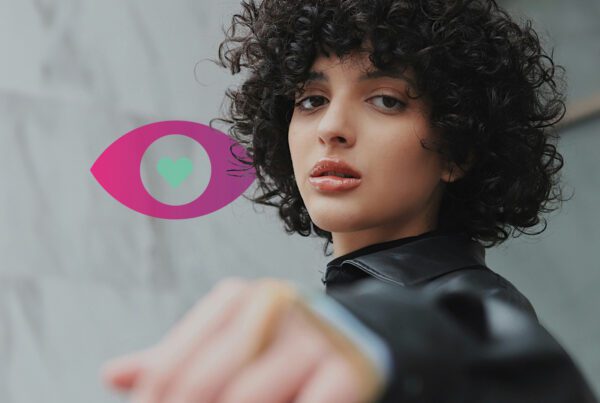A wide variety of social media influencers grace the pages of Instagram, Facebook, Pinterest, YouTube and other platforms. You have trendsetters who lead the way in fashion, beauty, entertainment and technology. Expert influencers are knowledgeable thought leaders in their fields, whether that means business, food, finance or gaming. Blogger influencers provide advice, expertise and inspiration with their articles, while advocate influencers stand for values important to people and brands. Influencers can also be categorized by the number of followers, subscribers or unique visitors to their social media accounts or blogs. These influencer tiers provide a convenient way for marketers to understand what they can expect from various levels of influencers, including what to pay them. Use this influencer tier guide to decide which influencer level is right for your next campaign.
Nano-Influencers
Nano-influencers have between 1,000 and 10,000 followers. What they may lack in followers, nano-influencers usually make for up in engagement rates, which is a big plus for brands. BigCommerce puts it into perspective by reporting that creators with 1,000 followers typically have a likes engagement rate of 8 percent on their posts. But mega-influencers with 10 million followers have only a 1.6 percent engagement rate for likes.
These emerging influencers form closer relationships with their audience members by responding meaningfully to comments and interacting more on an individual basis. As a result, the advice they give related to brands feels more like it’s coming from a trusted friend. This leads to greater brand loyalty, more users sharing content with their friends and increased sales. Nano-influencers are often niche- and category-specific as well, which makes them more relevant to brands. Working with nano-influencers is also cost-effective. Their rates may be lower or they may be more likely to accept gifted products or services in exchange for their creativity.
Micro-Influencers
Micro-influencers are also known for niche specialization and higher engagement rates, but their follower counts are higher: between 10,000 and 50,000. For comparison, Mention reports the average engagement rate for micro-influencers to be 2.43 percent. The average price per engagement for nano-influencers is 17 cents, while it’s 41 cents for micro-influencers. The Association of National Advertisers reports that 92 percent of consumers say they trust a micro-influencer’s recommendation over a traditional ad or celebrity endorsement. And 82 percent are likely to buy a product endorsed by a micro-influencer.
Micro-influencers are effective at raising brand awareness and bringing attention to new products. While nano-influencers are just starting out, micro-influencers have more polished content and generally more experience working with brands. They also reach a larger audience — increasing a brand’s lead generation — while still staying engaged and forming trusting relationships that foster brand loyalty. Micro-influencers also tend to partner only with brands they’re passionate about so they can maintain the trust of their audience. This makes their product recommendations even more authentic and can lead to long-term collaborations with brands, which saves marketers time, effort and money.

Mid-Tier Influencers
This group of influencers has more experience than micro-influencers and between 50,000 to 200,000 followers. They represent a lesser-known but powerful group of creators; they’re rising in popularity but not out of touch with their audience. Mid-tier influencers still maintain high engagement rates — yet aren’t as relationship-based — while reaching a larger audience for your brand. They’ve likely achieved the ability to make a living solely as an influencer and are more qualified for medium-sized influencer marketing budgets. For comparison, engaging with one mid-tier influencer is equivalent in reach to running multiple campaigns with nano- or micro-influencers, explains MediaKix.
Brands can expect polished, appealing photography, video content and posts from mid-tier influencers. They also bring authenticity to brands. They’ve worked their way up the influencer ladder with patience and consistency and want to maintain the bond they have with their audience.
Their followers are a mix between niche-concentrated and more general, which can help brands reach a broader audience. They also drive conversions for brands because their audience trusts them to give authentic recommendations and reviews. Mid-tier influencers also pose less of a financial risk for marketers; they have a proven track record yet aren’t as expensive as macro- and mega-influencers.
Macro-Influencers
Macro-influencers have 200,000 to 500,000 followers. This group is a mix of creators who’ve steadily grown their influence from the nano tier and those who are actual celebrities and other well-known figures. According to research conducted by Recode, macro-influencers have the highest ROI among all of the influencer tiers; their content yields more organic impressions per dollar spent. This makes them an effective way for brands to reach thousands of potential customers without spending the lofty rates required by mega-influencers.
Because of their large followings, macro-influencers are not able to maintain consistently high engagement rates like their lower-tiered counterparts. But what brands lose in engagement rates with these influencers, they gain in reach and professionalism. Macro-influencers are professionals who often pay photographers, videographers, editors and perhaps agents to assist with their content, so their rates are naturally higher. But they can also drive quick sales due to their star status.
Macro-influencers also give validation to brands and momentum to their product launches because they’re viewed as key opinion leaders. They add reassurance and legitimacy that a product delivers what it claims to. For this reason, brands marketing products related to health, sensitive topics and those with higher price tags often find success partnering with macro-influencers.

Mega-Influencers
Mega-influencers have 500,000 to 1 million followers. — an immensely wide reach. While it’s an expensive venture to partner with a mega-influencer, their massive influence across mainstream media is worth the price for some brands.
Web celebrities
Web celebrities have over 1 million followers — an immensely wide reach. The draw for brands is the incredible amount of reach these stars have. While it’s an expensive venture to partner with a web celebrity, their massive influence across mainstream media is worth the price for some brands.
Web celebrities give brands wide exposure, even with one short campaign. They’re also advantageous to brands looking to reach a broad audience of various ages, genders and interests instead of a targeted group of people. Brands need to carefully consider the authenticity level they seek from influencers because mega-influencers are not typically seen as brand ambassadors. Consumers trust influencer recommendations over that of mega-celebrities. However, their attention to brands can create sell-out demands, drive trends, shape popular culture and increase brand awareness dramatically.




